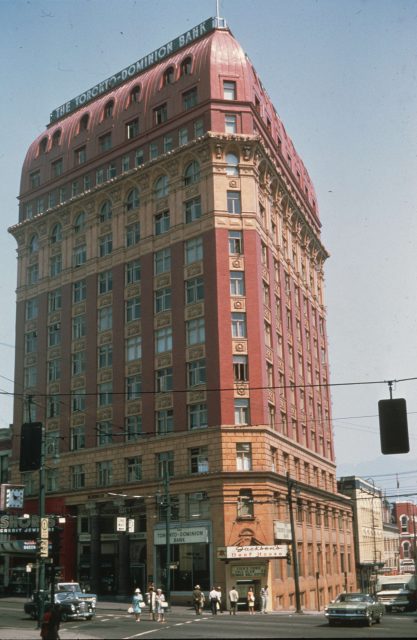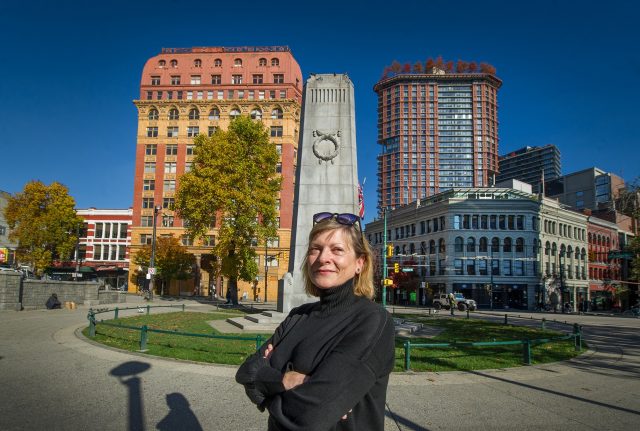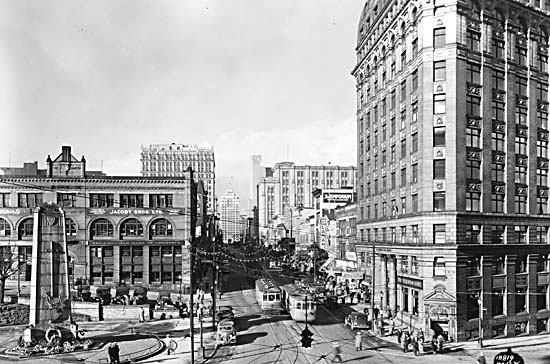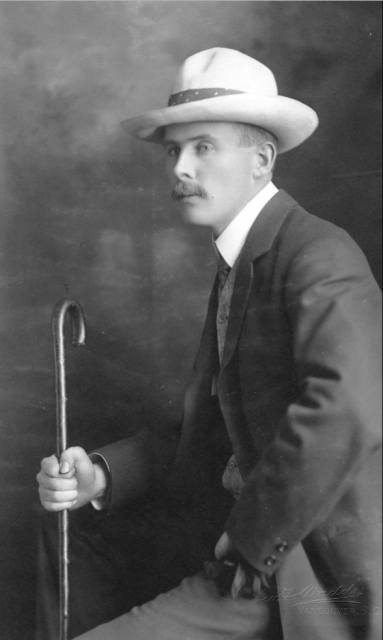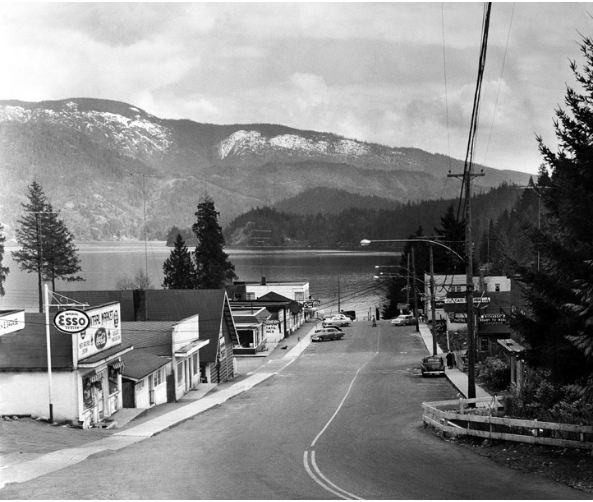Alvo von Alvensleben not only has a name you couldn’t make up, he’s one of the most fascinating characters in BC’s history. For some mysterious reason he has never rated a biography, but there is a chapter dedicated to him in my book At Home with History. I was just browsing my bookshelf and thinking what an interesting bunch of men and women BC has produced. Here are five men that I wish I’d met.
Angelo Branca, judge (1903-1984)
Angelo Branca grew up at 343 Prior Street with parents Teresa and Filippo, two brothers John and Joseph and sister Anne. As a lawyer he represented the madams and bootleggers of the East End and eventually became a BC Supreme Court judge. Filippo ran the grocery store on Main Street and he and Peter Tosi and Sam Minichiello were the three biggest importers of California grapes in the area. My favourite story comes from Ray Culos whose grandfather was Sam Minichiello, and says that the joke in the neighbourhood was that wine was a family affair. Filippo would sell the grapes to the bootleggers, his son John, a detective with the dry-squad would arrest them, and his other son, Angelo, would get them off in court.
Moore, Vincent. Gladiator of the Courts: Angelo Branca. Vancouver: Douglas and McIntyre, 1981.
Samuel Maclure, architect (1860-1929)
There are several books about Samuel Maclure, but the one by Janet Bingham is my favourite. I found my copy in a James Bay second hand bookstore/coffee shop and thought I’d won the lottery. Born just outside New Westminster, Maclure worked as a telegrapher in Vancouver before spending a year at art school and turning to architecture. Maclure had considerable design range and his legacy can be seen in hundreds of buildings around British Columbia. His buildings include the flamboyant Charles Murray Queen Anne house in New Westminster (1890), Gabriola on Davie Street (1901) and Hatley Castle in 1925.
Bingham, Janet. Samuel Maclure Architect. Horsdal and Schubart, 1985.
Walter Mulligan, chief of police (1904-1987)
At 42, Walter Mulligan was the youngest chief of police and the most corrupt. By 1955, he had 700 people under his command in a culture where cops routinely took bribes from bookies, bootleggers and hardened criminals. That was the year he was caught with his hand in the till after a former Province reporter broke the story about epidemic police corruption. Things unravelled quickly when detective sergeant Len Cuthbert tried to kill himself with his service revolver. He survived and told a police inquiry that he and Mulligan doubled their salaries with bribes. Apart from a girlfriend who lived in Strathcona, Mulligan had a fairly modest existence. He and his wife lived in an ordinary bungalow at 1155 West 50th Avenue. Partway through the police inquiry he moved to California and worked in a nursery. Later he became a bus dispatcher and retired to Oak Bay, where he died at 83.
Macdonald, Ian & O’Keefe, Betty. The Mulligan Affair: Heritage House Publishing, 1997.
Francis Rattenbury, architect (1867-1935)
In 1892, 25-year-old Francis Rattenbury won a competition to design the Parliament Buildings over 60 other architects. Before long he had a slew of buildings after his name including the Empress Hotel, the Crystal Gardens, the CPR Steamship Building and the Vancouver Court House. In 1898, he stunned Victoria’s society by marrying Florence Eleanor Nunn, the adopted daughter of a boarding-house keeper. Gradually, things unraveled. In 1923, with his career and marriage crumbling, Rattenbury met Alma Pakenham, a young divorcee. They married and moved to Bournemouth, England, where by all accounts Rattenbury should have died in obscurity. Instead Alma took up with the 18-year-old chauffeur, George Stoner. In a fit of jealousy, George bashed Rattenbury to death in 1935. Both Alma and George were tried for murder, Alma was acquitted, but after hearing George would hang, she promptly stabbed herself to death, fell into a river and drowned. George later had his death sentence overturned.
Reksten, Terry. Rattenbury. Victoria: Sono Nis Press, 1978.
LD Taylor, serial mayor (1857-1946)
LD Taylor is the most elected mayor in Vancouver’s history, winning nine elections, losing seven, and serving eight terms between 1910 and 1934. He looks like a nerdy little man in his trademark red tie and owlish glasses, but he was actually a bigamist and flamboyant risk taker. In 1905, he bought the Vancouver World newspaper from Sara McLagan, sister of Samuel Maclure and built the Sun Tower. LD supported an eight-hour work day and women’s suffrage, and during his watch he oversaw the opening of YVR and the Burrard Street bridge. He had a relaxed approach to gambling, bootlegging and prostitution. He once told a reporter that he didn’t believe that it was the mayor’s job to make Vancouver a “Sunday school town.”
Francis, Daniel. Mayor Louis Taylor and the Rise of Vancouver. Arsenal Pulp Press 2004.
I haven’t forgotten our women. I’ll be looking at five strong women who crashed through barriers and put their stamp on our province in very different ways.
© All rights reserved. Unless otherwise indicated, all blog content copyright Eve Lazarus.



